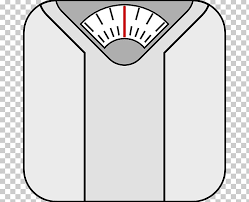

Yes, 80 kcal are not much, but many small amounts sum up quickly in my experience, and 80kcal in liquid calories are much less satisfying than more solid stuff on my plate.


Yes, 80 kcal are not much, but many small amounts sum up quickly in my experience, and 80kcal in liquid calories are much less satisfying than more solid stuff on my plate.


Yeah, non-dairy milk alternatives I did try. In away they are good as they don’t trigger the reaction I get with milk. But on the other hand since they don’t do that I can just as well drink my coffee black I think (and save these 80kcal altogether)


If it were useless we would see at least some populations in the world to have lost it altogether.


its not my plan, but it wouldnt be a problem for my health (i.e. I did it before)
I imagine it to be like 2 bottles of water and 3 bottles of oil or something (with bottles of 1 liter), or a 1 gallon jug.
I remember reading about a German TV host who lost weight and every week would fill up the total weight lost as water in two buckets and walk around the house with them just to get a feeling for the weight.
obese actually


I am 38 and have so far had no cavity. Turns out adults have a very easy handle on dental hygiene, brushing your teeth, flossing and avoiding candy and sweet drinks
Use rated games to be matched with real players. After a few games that you will lose you will be matched with players against which you have roughly a 50:50 chance of winning / losing. Don’t focus on the ELO rating specifically at the start. Playing against humans is definitely different from the computer. In the lower ELO ranges you will see a lot of moves that don’t make sense and that the chess engine would never play. On the other hand opponents can be quite good at reading your strategy (as opposed to a dumbed-down engine).
Use the Analyse game function after the game to get an idea of the mistakes you made.
I would start with 10 minute games so that you can play a few games in a row (gives you more practice) but still have time to think.


It kind of seems they stole a decade off of Lasker.
oops, was already posted… Doesn’t the UI give a hint for that? I’ll look twice next time.


Did they control for the fact that being overweight can be a cause to switch from sugar to sweeteners?
Not sure I understand everything, although I think I understand that an influx of new players can totally skew statistics.
It’s worth noting that this is about ELO ratings, so lichess may have a similar problem (I think it might be the case for Blitz on Lichess to suffer from a similar problem), but some of the proposed fixes are FIDE ELO specific (increasing starting ELO).
The problem seems to be that the ELO ratings aren’t accurate to estimate the correct probabilities for a match between a long-time chess player with higher ELO rating and a player from the “Queen’s gambit wave”.
Now the authors seem to paint this as a problem with the new players being underrated, the ELO distribution to be skewed. I agree that this can be a skew, I wonder however if the solution should be to boost ELO ratings of lower-ranked players.


I consider sport and working out to be really helpful for weight loss, primarily for its positive impact on my mental health, which in turn, also helps me to keep up a healthy and restricted diet.
I realize already that the same distance in swimming/running burns fewer calories than when I did them in a less-trained state, which is why my aims are now time-based (45 minute swim, 1h walk, etc.).
A typical mistake people who start to count calories make is to select in the TDEE calculator an active lifestyle and then adding the workout calories on top, which kind of means they are added twice when in reality they need to be accounted for only once. So I decided to pick “sedentary”, even though I work out. Then all workout burnt calories may help in losing weight a little faster, but I don’t risk to plateau due to overeating / wrong estimated calories for a workout.
Also, I do think a lot of advice in dieting should probably distinguish between
What works to shed a few pounds may not work to lose 40kgs.


Best of luck on your journey. Its good that you don’t have to do it entirely alone but have support by your Doctor and of course this community!


Peeing while standing I do only at urinals. At home I sit. Of course I would also pee while standing, but the additional cleaning need is just not worth it.

As Russia’s war of agression drags on
Oat milk doesn’t really work for me. Glad if it does for you ;-) I guess I will drink black coffee now. I received an AeroPress last week and while I always used good beans I ordered a selecton of premium beans from the webshop that I ordered the aeropress from.